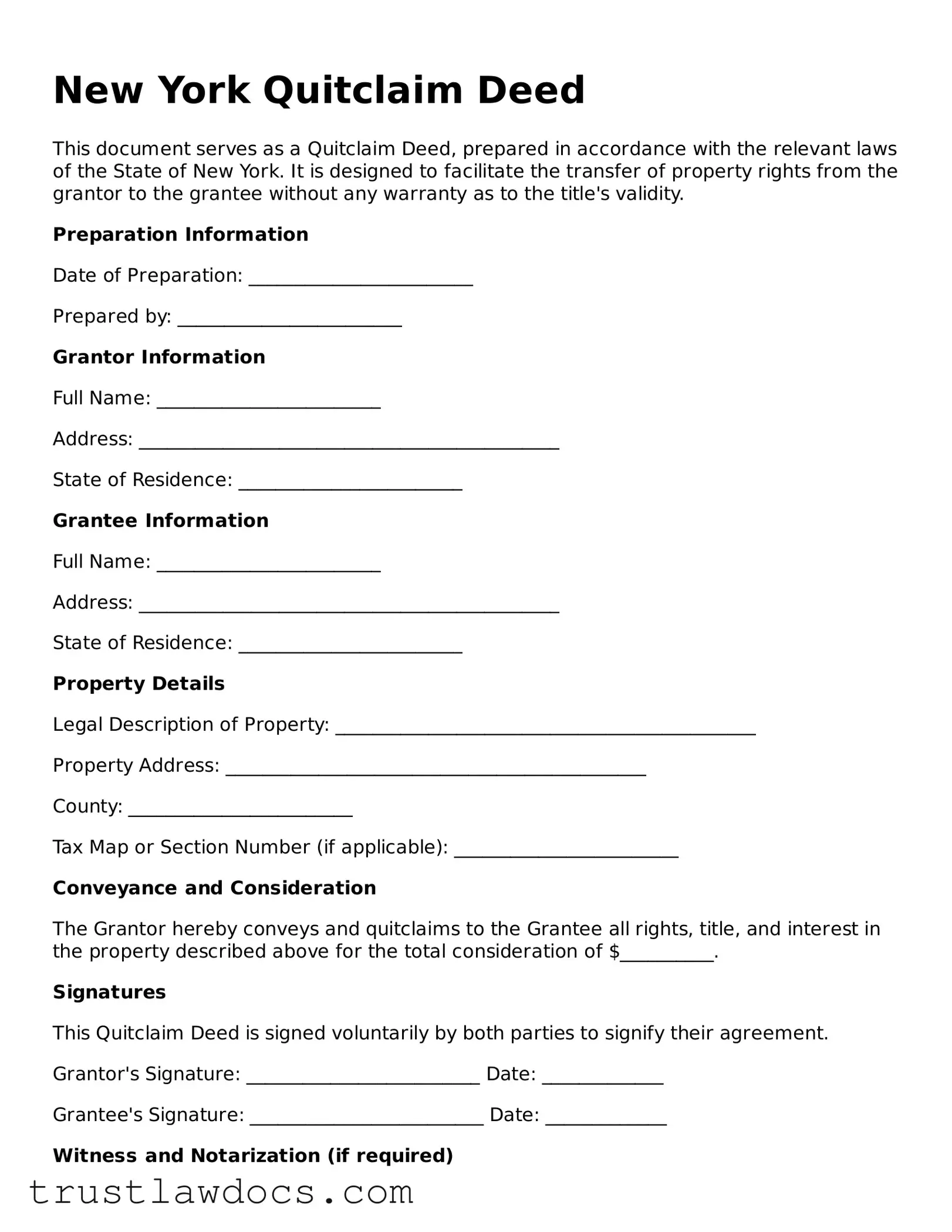New York Quitclaim Deed
This document serves as a Quitclaim Deed, prepared in accordance with the relevant laws of the State of New York. It is designed to facilitate the transfer of property rights from the grantor to the grantee without any warranty as to the title's validity.
Preparation Information
Date of Preparation: ________________________
Prepared by: ________________________
Grantor Information
Full Name: ________________________
Address: _____________________________________________
State of Residence: ________________________
Grantee Information
Full Name: ________________________
Address: _____________________________________________
State of Residence: ________________________
Property Details
Legal Description of Property: _____________________________________________
Property Address: _____________________________________________
County: ________________________
Tax Map or Section Number (if applicable): ________________________
Conveyance and Consideration
The Grantor hereby conveys and quitclaims to the Grantee all rights, title, and interest in the property described above for the total consideration of $__________.
Signatures
This Quitclaim Deed is signed voluntarily by both parties to signify their agreement.
Grantor's Signature: _________________________ Date: _____________
Grantee's Signature: _________________________ Date: _____________
Witness and Notarization (if required)
This section to be completed by a Notary Public, acknowledging the identities of the signatories and the voluntary nature of their signatures:
Notary Public Signature: _________________________ Date: _____________
My Commission Expires: _________________________
Recording
After signing, this Quitclaim Deed must be filed with the county clerk’s office in the county where the property is located to become a matter of public record.
Disclaimer
This template is provided as a general guide and does not constitute legal advice. Parties are advised to seek the services of a licensed attorney for any questions regarding the transfer of real property in New York.
